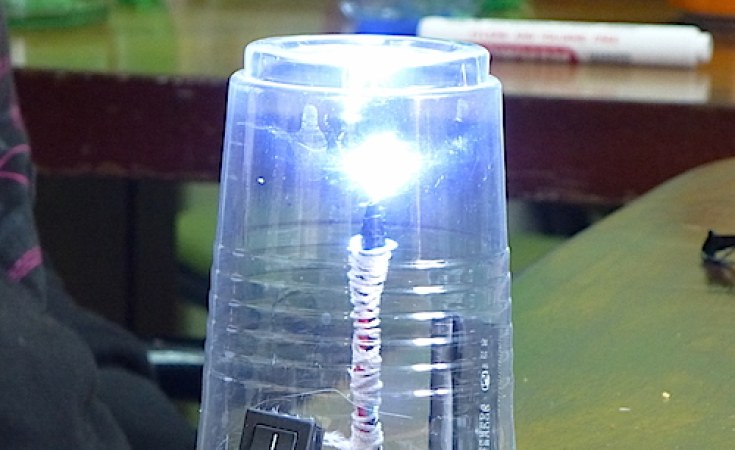When the sun goes down on almost 1.3 billion people around the world, the only respite from the darkness is fire.
These are the people who have no access to electricity. If children want to study, or adults want to remain productive, or families want to sit and talk, most must do it by light of a flame.
But light sources like wood, candles, or hydrocarbons like kerosene oil, which was burnt at the rate of 38.7 million gallons a day in 2010, are far from the best solution. Combustion is dirty, releases toxic chemicals and can be expensive.
"A fifth of the world's population earns on the order of $1 per day and lacks access to grid electricity," wrote Evan Mills, a Lawrence Berkeley National Lab staff scientist, in the 2012 technical report Health Impacts of Fuel-Based Lighting. "They pay a far higher proportion of their income for illumination than those in wealthy countries, obtaining light with fuel-based sources, primarily kerosene lanterns. The same population experiences adverse health and safety risks from these same lighting fuels."
Among the problems that kerosene oil lights cause: structure fires, burns, accidental ingestion of the fuel by children, indoor air pollution, possible increase in cataracts and tuberculosis by repeated exposure to the smoke, and others. The Swiss Federal Institutes of Technology in Lausanne (EPFL) says burning kerosene for light costs the average family up to three dollars a week—up to 20 percent of their income—and causes those who use it indoors to inhale the equivalent of 40 cigarettes a day.
Many groups—like Mills' Lumina Project—are trying to tackle this long-understood problem by replacing fuel-based lighting with modern alternatives like solar power and LEDs. Many of these pilots sell products such as solar-powered flashlights at low, subsidized costs directly to the rural poor.
One such group, LEDsafari out of Switzerland, is coming at the problem from a bit of a different angle—teaching those who use fuel-based light how to cheaply and easily build their own solar-powered LED lights. The result: a two-dollar do-it-yourself solar lamp made using a short list of locally available parts.
The light is made of an LED bulb, wire, a switch, a rechargeable cellphone battery, a solar photovoltaic panel and a bottle. The pieces together cost around two dollars, the amount a family typically spends on kerosene fuel for a week of light.
The team, made of professionals and graduate students all 26 years old and younger, designed it to operate without the need of any control system to minimize cost and make it easily repairable. They say six hours in the sun charges the device for up to five hours of operation.
"We were able to remove the battery controller, which reduces the cost drastically and also the complication to build it," LEDsafari says on the website. "All the components have been chosen in such a way that they nullify the requirement of extra components such as voltage controller, current controller, resistors, capacitors, charge controllers, etc."
Currently, their design means the lamp lasts only three months. LEDsafari says they have opened their process and not applied for a patent to let others tinker with it to make it better. "We are working on designing better lamps which will last long," they say on the website. "It's a[n] ongoing process."
Their plan is to make the LEDsafari lamp a viral sensation by getting volunteer-minded travelers to run training workshops in far-flung parts of the world. Then, they hope, the ease of construction, ubiquity of components and cheapness will cause locals to build and share their knowledge with others. LEDsafari runs a three-day workshop in poor areas and for volunteers to train people how to build and repair the light source, a transfer of skills and knowledge that those in the development world call local capacity-building. So far, the team has trained 200 people in India, Kenya and Tanzania on how to build the devices.
"It is important that the know-how also comes from the people themselves, that they take ownership of the system so that it is not simply an element imported from rich countries that they soon forget," says Govinda Upadhyay, the creator of the LEDsafari lamp who is an EPFL doctoral student in sustainable city planning. "Three days is all it takes to train a village to manufacture these lamps."


